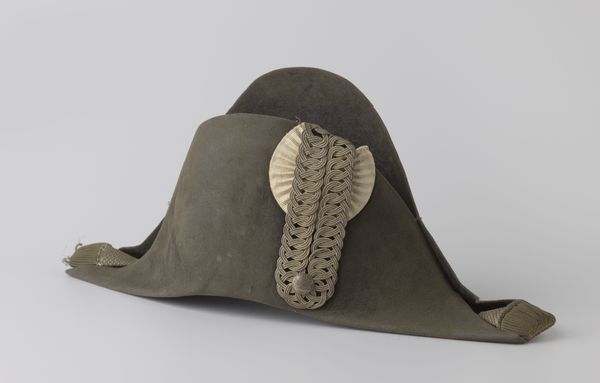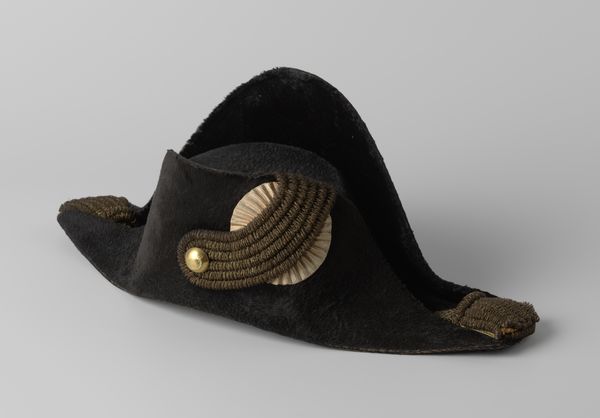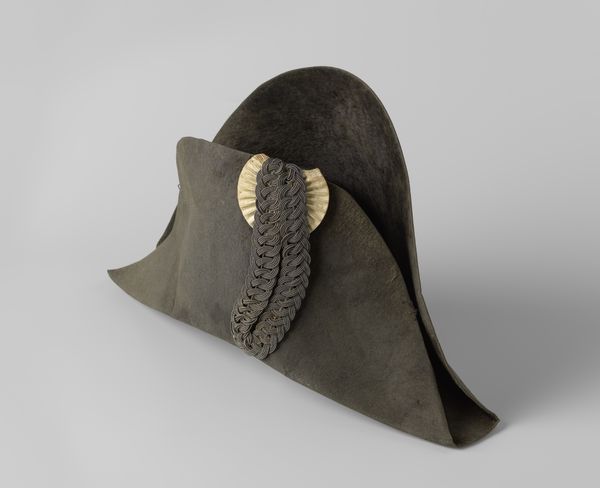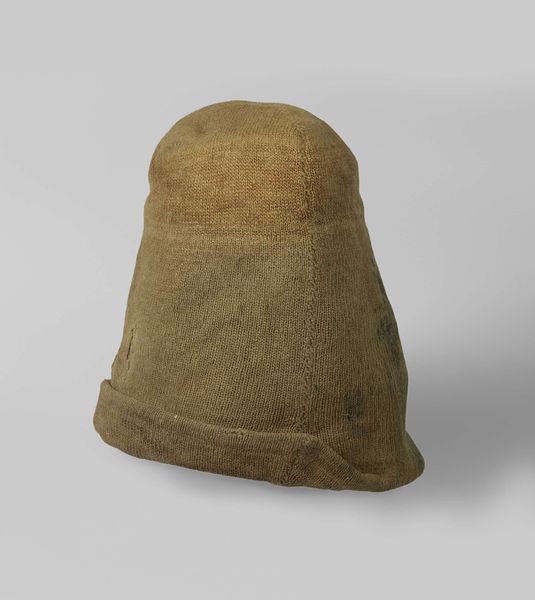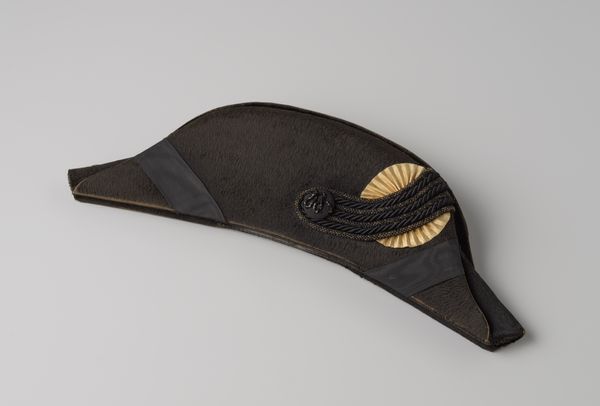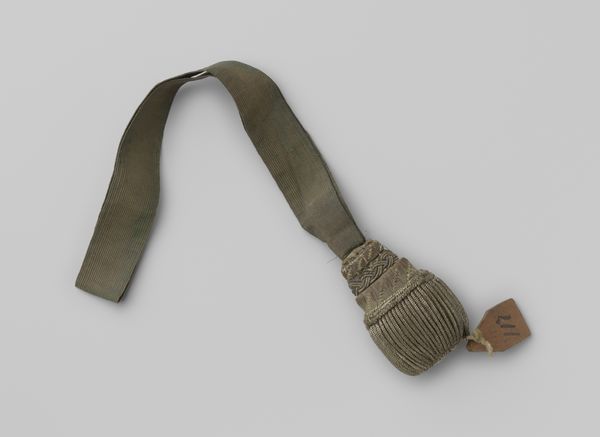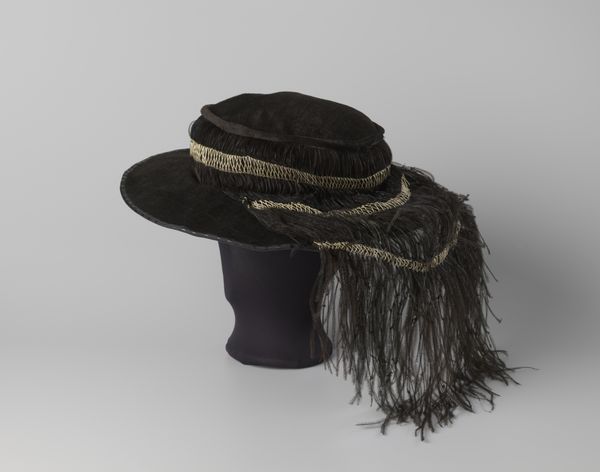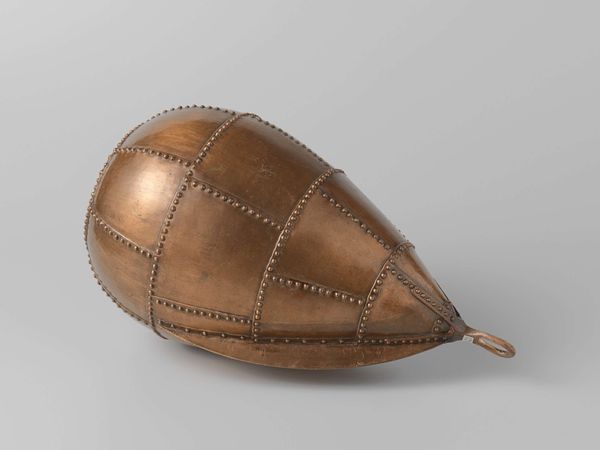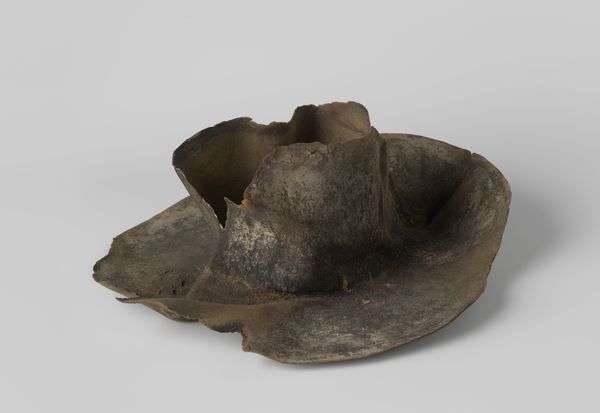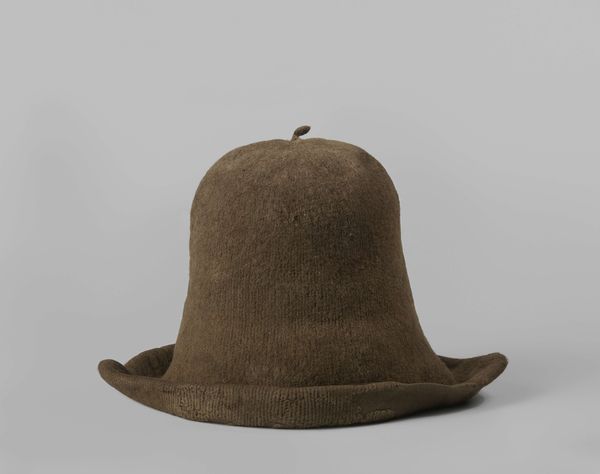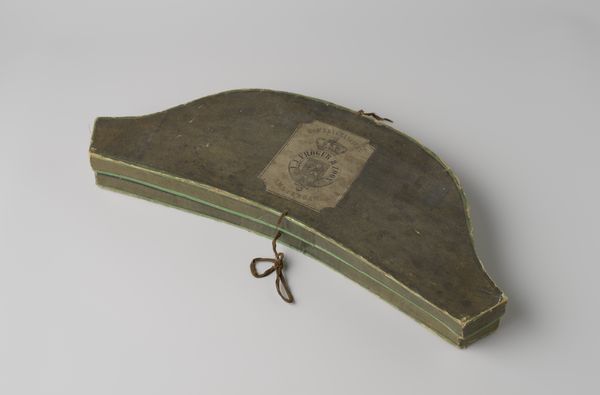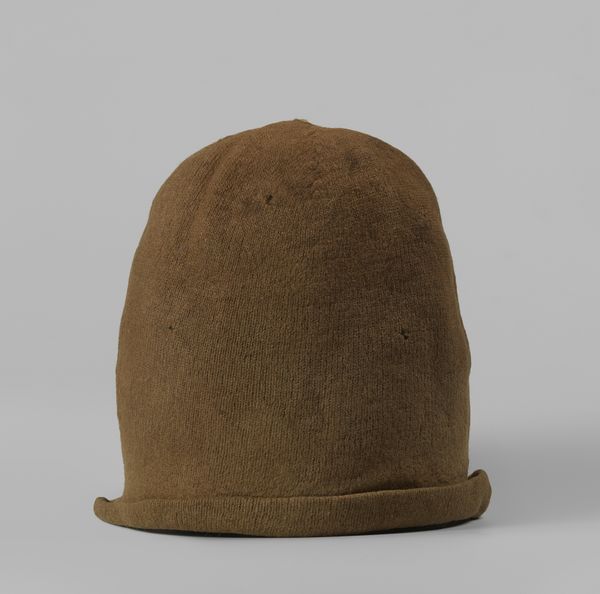
metal, textile, sculpture, wood
#
portrait
#
metal
#
textile
#
classicism
#
sculpture
#
romanticism
#
wood
#
academic-art
Dimensions: width 60 cm, height 20 cm, depth 42.5 cm, diameter 13 cm, length 42 cm, diameter 16 cm
Copyright: Rijks Museum: Open Domain
Editor: Here we have a bicorne hat, likely dating from the 19th century, that belonged to an officer in the Royal Dutch Navy. It's constructed of what appears to be wood, textile, and metal. It has an austere look to it; a weathered presence suggests its age and use. What story do you see it telling? Curator: For me, the story lies within its materiality and the labour embedded within. Look closely – the wood provides the initial structure, covered in textile, then embellished with intricate metalwork. Think of the skilled artisans, each contributing their specialized labour. Was the textile locally sourced, or imported? The gold braid speaks of consumption and hierarchy. Who wore this hat, and what power did it signify? Editor: So you're seeing beyond just an accessory and more into the processes and materials that define a time and place. The labor involved intrigues me as well – were these mass-produced items, or individual commissions? Curator: Exactly! These were most likely produced in workshops utilizing varied levels of craftsmanship. Now, consider its function: protecting its wearer while communicating naval power, think about the social structure that made such displays desirable. Who had access to such craft and display? The wear and tear also begs the question: does its current state impact our view? Editor: That's fascinating! It changes how I see the hat now. I was focusing on its aesthetic appearance but considering its production and the society surrounding it, it reveals a more expansive meaning about class, work, and Dutch naval power at the time. Curator: Precisely. By dissecting its construction, we unearth hidden narratives of labour, trade, and social structure far beyond its simple purpose. Editor: Well, this exploration definitely shows how examining materials can uncover a whole network of social and historical context, thank you!
Comments
No comments
Be the first to comment and join the conversation on the ultimate creative platform.
